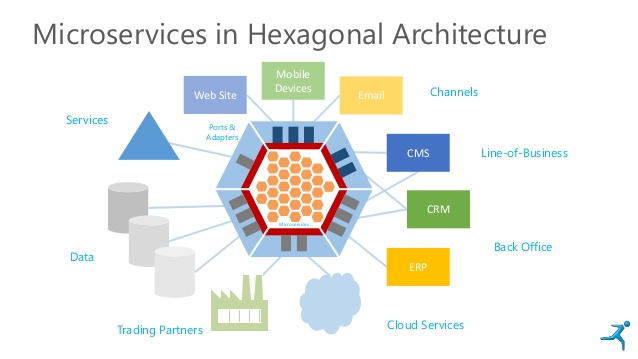Microservices Architecture for Mobile Apps: Enhance Scalability & Flexibility
The keys to better mobile development may be hidden with the micro service architecture. Here we explore the fundamentals of micro services and why they should be a central part of mobile planning.
Introducing a micro services-based architecture has some specific considerations when it comes to delivering content to mobile applications. I’m going to deal with two main concerns – coupling and performance.
The model for mobile delivery is based on four layers: the UI/client, network services, APIs and systems of record. Each layer can be abstracted and tuned for mobile customers. Fundamentally, a micro service is an API with a very particular focus. Unlike complex APIs, such as Google Maps, a microservice is a small service that only has one objective: to leverage collections of micro services together to form a solution. Within the development, there is a concept of Object-Oriented Programming — a model organized around objects and data instead of actions and logic. Micro services offer a similar concept for APIs, and each service is a unique function of itself.
The approach to building a micro service architecture should be as follows:
First, ask: What is the business challenge? Break down the different business challenges into small parts that form each stage of the enterprise problem. Each section can be one or more micro services.
Avoid extensive APIs. If the micro service is getting too complicated, then you are giving the service too much functionality.
The goal is to have a series of services that can be strung together to meet the needs of future business problems. The fundamentals for work activities are not too different. There will be different persona types, situations and systems to connect too. Define each scenario in the business opportunity and examine if you have the right microservice to resolve the issue. Companies should resist the temptation to extend an existing API to fix a business problem if a service does not exist. Instead, break down the problem into components and build the services. With a collection of only 30 micro services, you will be able to resolve hundreds of business problems.
The micro services solution would need to consider:
– Cross platform support (iOS, Android, UWP), code reusability and maintenance
– On-device data persistence, native and non-native databases
– App update without App Store (Code pushify)
– Push notifications handling
– Login and user session management
– Leveraging MBaaS services like Amazon Mobile Hub, Azure Mobile Hub etc. for infrastructure of the mobile app
– App performance and user experience
– Ability to integrate with native code if required, and ability to interface with native device API libraries if required.
The power of adopting a micro service architecture is that you can focus on delivering new business tools fast. A micro service must remain small for it to be successful, as keeping the service small is much easier to maintain. Instead of managing larger APIs with verbose code structure, a Micro service can be updated and deployed in very short iterations.
Contact Us now for more ways to turn around your solutions in business.
Tags :
micro service
micro services
service architecture
![circle-shapes]()











